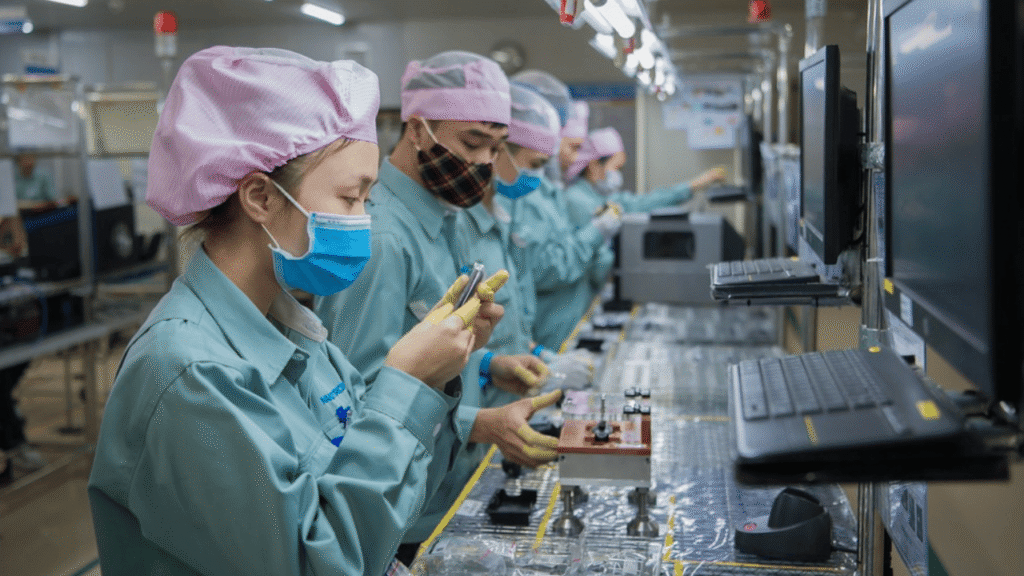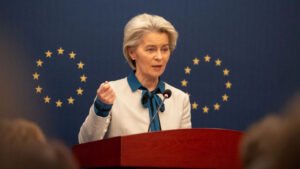NUR GÜLZADE
The most recent annual United Nations General Assembly (UNGA) held in New York once again unfolded under the shadow of issues such as global security, climate change, and economic recovery. However, one of the most striking topics of the meetings was the platform used by the Chinese delegation to share its experiences and domestic progress in the field of women’s rights and gender equality. The Beijing administration highlighted not only the advances made in strengthening women’s rights within the country but also its international contributions to recognizing women’s role in global development.
HISTORICAL DETERMINATION AND CONCRETE PROGRESS AT HOME
Representatives of the People’s Republic of China emphasized that gender equality is recognized as one of the country’s fundamental state policies. In this context, the “Law on the Protection of Women’s Rights and Interests,” which came into force in 1992 and was comprehensively updated in 2022, has served as an important legal basis in combating discrimination, harassment, and inequality in the workplace.
OFFICIAL DATA PRESENTED BY THE DELEGATION AT THE UNGA WAS STRIKING:
• Today, women make up more than 40% of China’s workforce; their representation in fields such as high technology, scientific research, and public administration is rapidly increasing.
• In higher education, the proportion of female students has recently surpassed that of men; this is in sharp contrast to the unequal situation of previous decades.
• Maternal mortality rates have fallen by more than 80% since the 1990s. This success has been made possible through the expansion of healthcare services in rural areas, subsidies for maternity care, and widespread public health campaigns.
• Women account for about 27% of local People’s Congress representatives; this figure reflects national policies that continually increase women’s participation in decision-making mechanisms.
Projects Supporting Women on a Global Scale
China plays an active role not only within its own borders but also globally in defending women’s rights. These efforts particularly aim to increase the participation of women in economic and social life in developing countries.
• Through the China International Development Cooperation Agency (CIDCA), microcredit and training programs for female entrepreneurs are being implemented in different African countries. For example, in Kenya, Tanzania, and Ethiopia, thousands of women receive training in business planning, digital marketing, and financial literacy at “Women’s Entrepreneurship Training Centers” funded by China.
• The “African Women Leaders Network,” established with China’s support, aims to increase women’s participation in local governance and civil society organizations across several countries.
• Under the “Fund for Development for Women,” jointly run with UN Women, around 100,000 women in Asia and Africa have received vocational skills training and start-up capital support.
Norm-setting Role at the International Level
In its speeches at the UNGA podium, the Chinese delegation emphasized that social equality is not only a matter of “human rights” but also a “fundamental condition of development.” This approach goes back to the Fourth World Conference on Women held in Beijing in 1995. The “Beijing Declaration” and “Platform for Action,” adopted at that conference, are still recognized today as framework documents guiding women’s policies worldwide.
At this year’s General Assembly, China once again stressed that “the empowerment of women is indispensable for achieving sustainable development goals.” Chinese diplomats also called on other countries to invest in women, adopt the principle of equal pay for equal work, and embrace equal opportunities in education.
WOMEN’S RISE AS AN INDICATOR OF DEVELOPMENT
The data presented by China shows that gender equality is not only a human rights requirement but also a fundamental element of economic development. Women’s more active participation in the workforce increases innovation and productivity rates. The number of technology start-ups founded by female Chinese entrepreneurs has increased by more than 30% in the last five years. In rural areas, women’s cooperatives are boosting agricultural productivity while also reducing local poverty.
CONCLUSION: A QUIET BUT POWERFUL TRANSFORMATION
The presentation at the UNGA revealed China’s quiet but determined transformation in the field of women’s rights. The Beijing administration is striving to build a system in which women enjoy equal opportunities in all areas of life through both legal regulations and economic and social policies. These efforts offer a promising model not only for Chinese women but also for women all around the world.
Source: https://www.aydinlik.com.tr/haber/kadin-esitliginde-cin-modeli-546187
Abroad Africa AI Beijing Belt & Road BLCU BRICS China chinese CPC CSC Culture Economy education EU Guizhou Kültür Langauge movie Multipolarity Russia scholarship science Shanghai Sino Sino Turkish Sino Turkish Sino Turkish Sino Turkish Sino Turkish Studies Sino Turkish Studies Sino Turkish Studies Sino Turkish Studies space Syria Taiwan Tariff trump Turkiye Türkiye University USA Xinjiang ZJUT Çin





